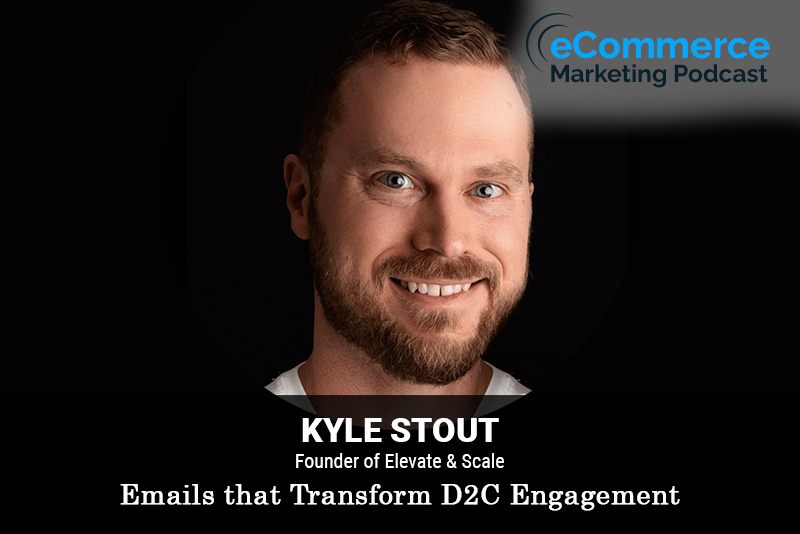
The eCommerce Marketing Podcast walks you through everything that goes into ecommerce marketing — from inbound marketing to paid advertising to conversions. Learn the strategies top marketing experts use to grow their businesses.
Kyle Stout is the founder of Elevate & Scale, a leading email marketing agency that helps direct-to-consumer brands unlock hidden revenue and put their sales on autopilot.
In this episode, you will learn
Why email marketing remains pivotal for D2C brands and what key metrics should they track to measure success
Top strategies for organically building an email list, and once built, how do you recommend segmenting it for personalization and maximum impact
How do you balance between promotional and value-driven content in emails, and what elements have you found most effective in creating a high-converting email for D2C brands
How do lifecycle emails automate sales for D2C brands, and what’s one essential email automation they should have
The future of email marketing for D2C brands over the next 5 years, and the top 3 strategies they should adopt now to stay ahead of the curve
For show transcript and past guests, please visit https://www.ecommercemarketingpodcast.com
Or on YouTube at:
https://www.youtube.com/channel/UC3PgT0NOGzpdPGQtBK0XLIQ
Follow Arlen:
Twitter: https://twitter.com/askarlen
Facebook: https://www.facebook.com/arlen.robinson.7
Instagram: https://www.instagram.com/arlenyohance/
LinkedIn: https://www.linkedin.com/in/arlenrobinson/
Past guests on the ecommerce marketing podcast include Neil Patel, Nemo Chu, Luke Lintz, Luke Carthy, Amber Armstrong, Kris Ruby and many more.
Thanks for listening. Be sure to subscribe and leave a review.

Title: The Power of E-Farming and Email Marketing with Igor Kheifets
Guest: Igor Kheifets, Founder of Igor Solo Ads
In this episode of the E-commerce Marketing Podcast, Arlen Robinson interviews Igor Kheifets, an Amazon best-selling author and the founder of Igor Solo Ads. Igor shares his journey from Ukraine to Israel and eventually becoming a successful entrepreneur in the field of email marketing. He discusses the concept of e-farming, the significance of email marketing in today’s digital landscape, and provides actionable tips for e-commerce businesses to leverage email marketing effectively.
Key Takeaways:
- Igor’s Background and Journey ([02:11].23)
- Igor’s challenging upbringing in Ukraine and Israel, his family’s financial struggles, and his journey into entrepreneurship.
- E-Farming Explained ([05:27].694)
- Introduction to e-farming and its significance in building and leveraging an email list for business growth.
- Overcoming Military Obligations ([10:29].206)
- Igor’s strategic rebellion to exit the Israeli military and pursue his entrepreneurial dreams.
- Importance of Email Lists ([31:00].297)
- Building and maintaining an email list as a critical asset for business success and higher valuation during exits.
- Email Marketing Effectiveness ([32:00].138)
- Email’s unmatched potential as a marketing tool, supported by data from various studies on email performance.
- Common Email Marketing Mistakes ([42:43].29)
- Not building a list, not mailing the list frequently, and not including offers in the emails.
- Future of Email Marketing ([46:59].646)
- Predictions on email marketing’s growing importance and how consumers are increasingly relying on email for their purchasing decisions.
Guest Info:
- Name: Igor Kheifets
- Title: Founder of Igor Solo Ads
- Book: List Building Lifestyle: Confessions of an Email Millionaire
- Podcast: List Building Lifestyle Podcast











